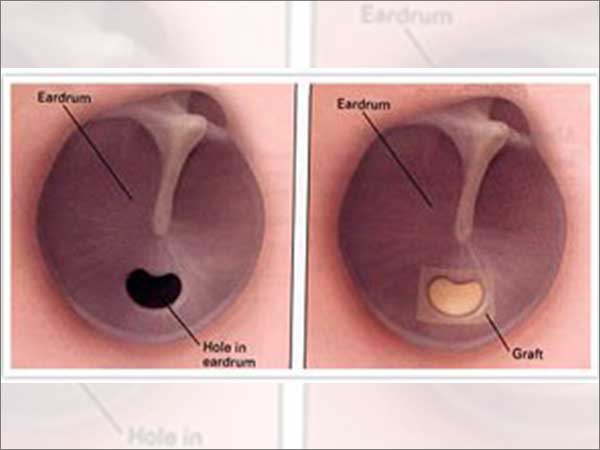Tympanoplasty

Tympanoplasty: Comprehensive Overview
What is Tympanoplasty?
Tympanoplasty is a surgical procedure performed to address issues related to the eardrum (tympanic membrane) and the small bones (ossicles) in the middle ear. These issues may include perforations in the eardrum or damage to the ossicles that affect hearing.
Objective of Tympanoplasty: The primary objective of Tympanoplasty is twofold:
- Closure of Perforations: If there are perforations (holes) in the eardrum, Tympanoplasty aims to repair these perforations, restoring the integrity of the eardrum.
- Improvement of Hearing: By repairing the eardrum and, if necessary, reconstructing the ossicles, Tympanoplasty seeks to improve hearing function in individuals experiencing hearing loss or other auditory issues.
Indications for Tympanoplasty: Tympanoplasty may be recommended for individuals presenting with various symptoms, including:
- Ear drainage, which may be clear, pus-filled, or bloody.
- Hearing loss, ranging from mild to severe.
- Tinnitus, characterized by a persistent ringing or buzzing sensation in the ear.
- Vertigo, a sensation of dizziness or spinning.
- Nausea or vomiting associated with vertigo.
Diagnostic Procedures: Before proceeding with Tympanoplasty, a thorough diagnostic evaluation is conducted, which may include:
- Audiogram: This test assesses the patient’s hearing ability by measuring responses to sounds of varying frequencies and intensities. It helps identify the extent and nature of hearing loss.
- Otoscopy: During otoscopy, a healthcare provider examines the ear canal and eardrum using a specialized instrument called an otoscope. This allows visualization of the tympanic membrane and assessment of its condition.
- Fistula Test: If there’s suspicion of a fistula (an abnormal connection) between the inner ear and surrounding structures, a fistula test may be performed to evaluate vestibular function and assess for any associated symptoms.
- Routine blood tests and urine examination may also be conducted to rule out underlying medical conditions.
Surgical Procedure: Tympanoplasty is typically performed under general anesthesia to ensure the patient’s comfort and safety throughout the procedure. The surgical steps involved in Tympanoplasty include:
- Incision: An incision is made in the external ear canal, often positioned behind the ear for better access to the tympanic membrane.
- Exposure: The eardrum is carefully exposed, allowing the surgeon to visualize any perforations or abnormalities.
- Repair: If there are perforations in the eardrum, they are meticulously repaired using tissue grafts obtained from the patient’s own body (such as fascia from the temporalis muscle).
- Ossicular Reconstruction: If the ossicles (small bones) in the middle ear are damaged or missing, they may be reconstructed or replaced with prosthetic devices to restore proper hearing function.
Post-Procedure Care: After Tympanoplasty, patients receive comprehensive post-operative care to ensure optimal healing and recovery. This may include:
- Prescribed medications, such as antibiotics to prevent infection and pain relievers to manage discomfort.
- Regular follow-up appointments to monitor healing progress and assess hearing function.
- Precautionary measures to prevent trauma to the ear, including avoiding water exposure and refraining from activities that may exert pressure on the surgical site.
- Instructions on proper wound care and hygiene to minimize the risk of complications.
Potential Risks and Complications: While Tympanoplasty is generally considered safe and effective, there are potential risks and complications associated with the procedure, including:
- Excessive bleeding during or after surgery.
- Damage to the facial nerve, which may result in altered taste sensation or facial weakness.
- Hearing loss or worsening of existing hearing impairment.
- Infection at the surgical site.
- Breathing difficulties or adverse reactions to anesthesia.
- Dizziness, vertigo, or imbalance.
- Failure of the eardrum to heal completely, requiring further intervention or revision surgery.
Tympanoplasty is a valuable surgical intervention for addressing eardrum perforations and middle ear pathology, offering patients the opportunity to improve hearing function and alleviate associated symptoms. With careful evaluation, meticulous surgical technique, and comprehensive post-operative care, Tympanoplasty can yield favorable outcomes and enhance the quality of life for individuals with ear-related issues.
For inquiries regarding Tympanoplasty, please don’t hesitate to contact us.
